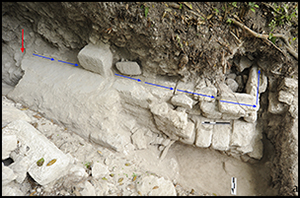Crossref Citations
This article has been cited by the following publications. This list is generated based on data provided by
Crossref.
Douglas, Peter M.J.
Brenner, Mark
and
Curtis, Jason H.
2016.
Methods and future directions for paleoclimatology in the Maya Lowlands.
Global and Planetary Change,
Vol. 138,
Issue. ,
p.
3.
Źrałka, Jarosław
Hermes, Bernard
and
Koszkul, Wiesław
2018.
The Maya “Protoclassic” from the Perspective of Recent Research at Nakum, Peten, Guatemala.
Journal of Field Archaeology,
Vol. 43,
Issue. 3,
p.
236.
Halperin, Christina T.
Le Moine, Jean-Baptiste
and
Pérez Zambrano, Enrique
2019.
Infrastructures of moving water at the Maya site of Ucanal, Petén, Guatemala.
Journal of Anthropological Archaeology,
Vol. 56,
Issue. ,
p.
101102.
Źrałka, Jarosław
Helmke, Christophe
Hermes, Bernard
Koszkul, Wiesław
Ting, Carmen
Bishop, Ronald
and
Bojkowska, Dorota
2020.
POLITICAL ALLIANCES AND TRADE CONNECTIONS OBSERVED IN THE CERAMIC RECORD OF THE CLASSIC PERIOD: THE PERSPECTIVE FROM THE MAYA SITE OF NAKUM, GUATEMALA.
Ancient Mesoamerica,
Vol. 31,
Issue. 3,
p.
461.
Hansen, Richard D.
Morales-Aguilar, Carlos
Thompson, Josephine
Ensley, Ross
Hernández, Enrique
Schreiner, Thomas
Suyuc-Ley, Edgar
and
Martínez, Gustavo
2023.
LiDAR analyses in the contiguous Mirador-Calakmul Karst Basin, Guatemala: an introduction to new perspectives on regional early Maya socioeconomic and political organization.
Ancient Mesoamerica,
Vol. 34,
Issue. 3,
p.
587.
